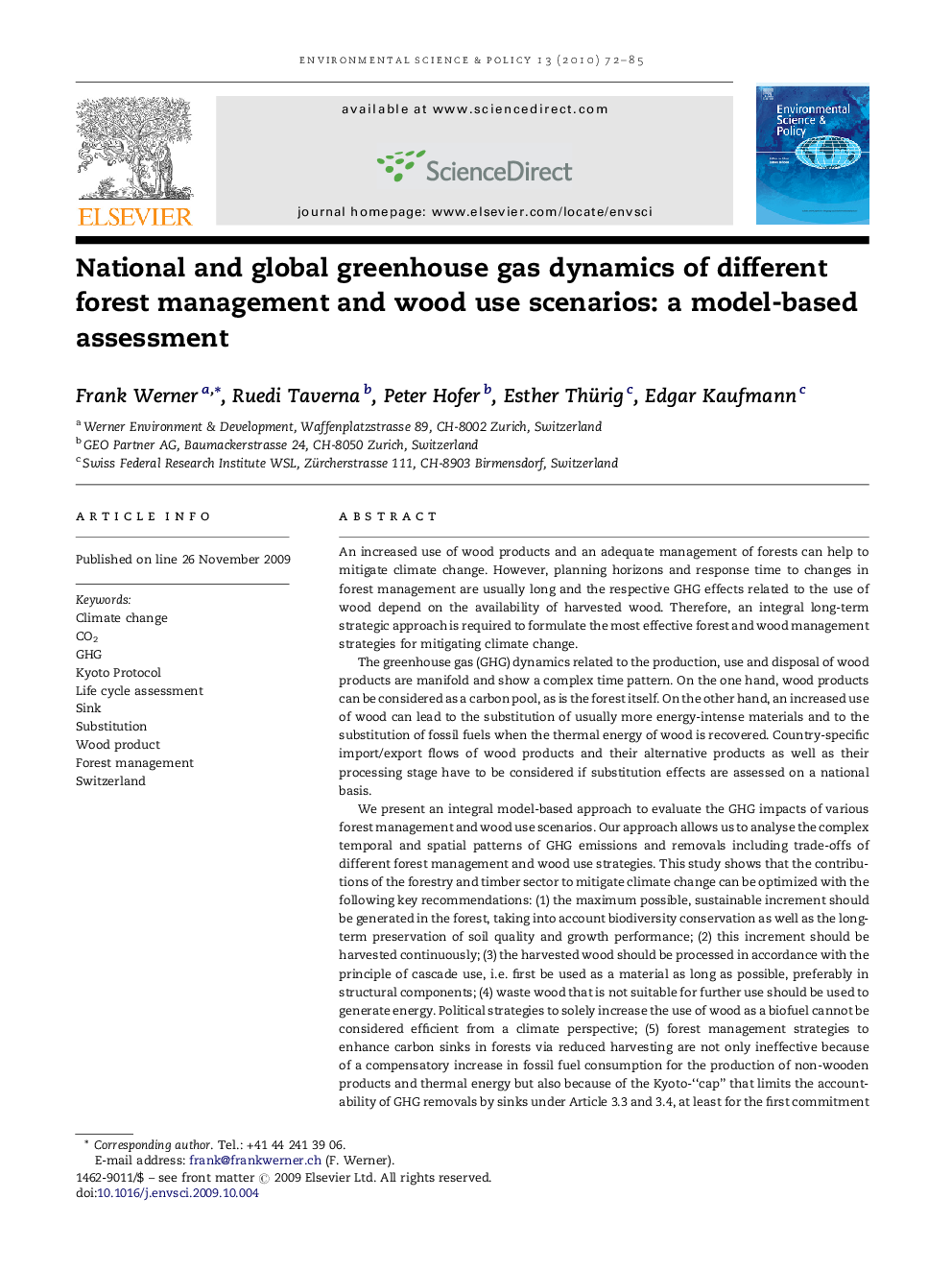| کد مقاله | کد نشریه | سال انتشار | مقاله انگلیسی | نسخه تمام متن |
|---|---|---|---|---|
| 1054111 | 946747 | 2010 | 14 صفحه PDF | دانلود رایگان |

An increased use of wood products and an adequate management of forests can help to mitigate climate change. However, planning horizons and response time to changes in forest management are usually long and the respective GHG effects related to the use of wood depend on the availability of harvested wood. Therefore, an integral long-term strategic approach is required to formulate the most effective forest and wood management strategies for mitigating climate change.The greenhouse gas (GHG) dynamics related to the production, use and disposal of wood products are manifold and show a complex time pattern. On the one hand, wood products can be considered as a carbon pool, as is the forest itself. On the other hand, an increased use of wood can lead to the substitution of usually more energy-intense materials and to the substitution of fossil fuels when the thermal energy of wood is recovered. Country-specific import/export flows of wood products and their alternative products as well as their processing stage have to be considered if substitution effects are assessed on a national basis.We present an integral model-based approach to evaluate the GHG impacts of various forest management and wood use scenarios. Our approach allows us to analyse the complex temporal and spatial patterns of GHG emissions and removals including trade-offs of different forest management and wood use strategies. This study shows that the contributions of the forestry and timber sector to mitigate climate change can be optimized with the following key recommendations: (1) the maximum possible, sustainable increment should be generated in the forest, taking into account biodiversity conservation as well as the long-term preservation of soil quality and growth performance; (2) this increment should be harvested continuously; (3) the harvested wood should be processed in accordance with the principle of cascade use, i.e. first be used as a material as long as possible, preferably in structural components; (4) waste wood that is not suitable for further use should be used to generate energy. Political strategies to solely increase the use of wood as a biofuel cannot be considered efficient from a climate perspective; (5) forest management strategies to enhance carbon sinks in forests via reduced harvesting are not only ineffective because of a compensatory increase in fossil fuel consumption for the production of non-wooden products and thermal energy but also because of the Kyoto-“cap” that limits the accountability of GHG removals by sinks under Article 3.3 and 3.4, at least for the first commitment period; (6) the effect of substitution through the material and energy use of wood is more significant and sustained as compared with the stock effects in wood products, which tend towards new steady-state flow equilibria with no further increase of C stocks; (7) from a global perspective, the effect of material substitution exceeds that of energy recovery from wood. In the Swiss context, however, the energy recovery from wood generates a greater substitution effect than material substitution.
Journal: Environmental Science & Policy - Volume 13, Issue 1, February 2010, Pages 72–85